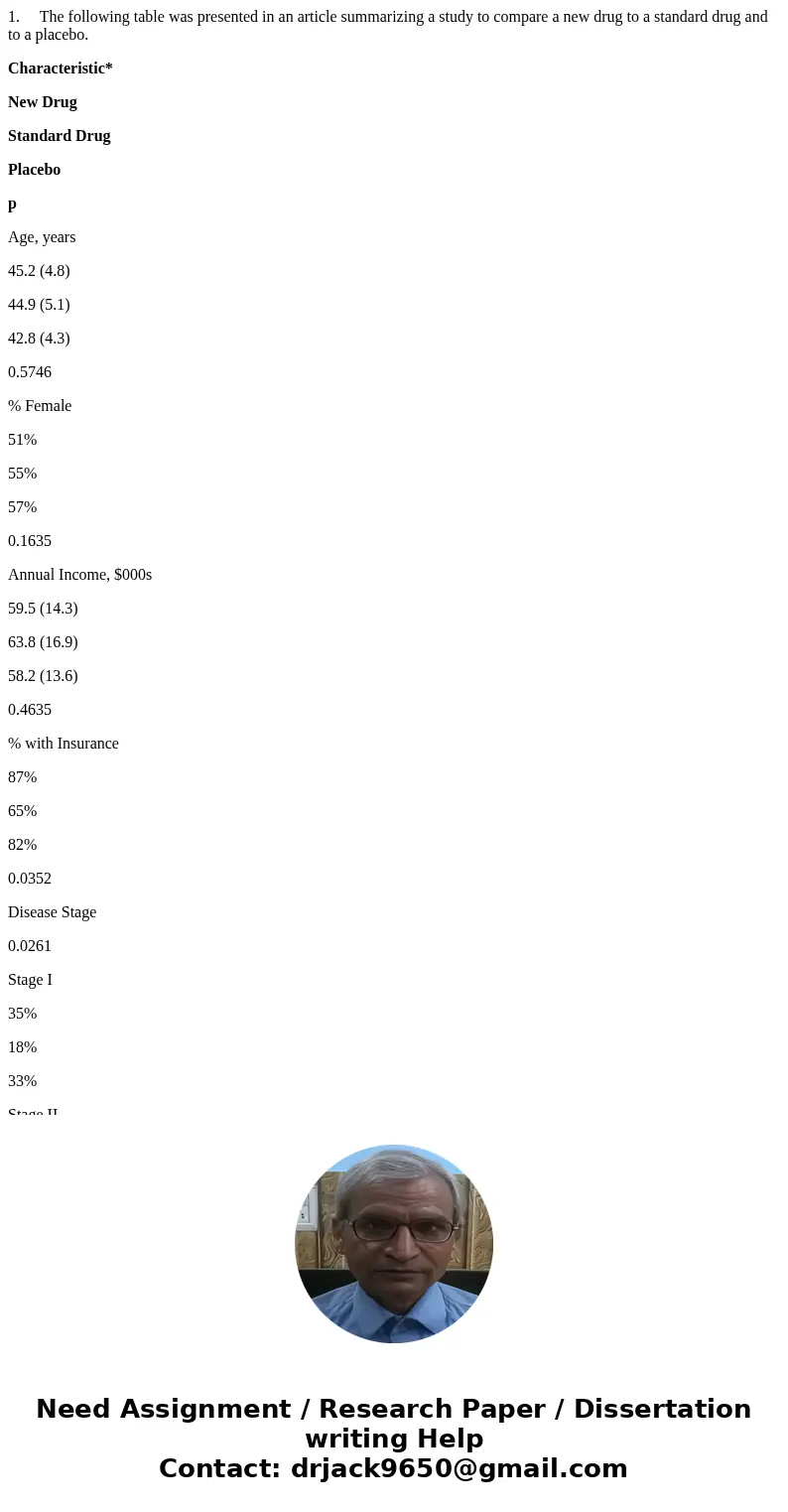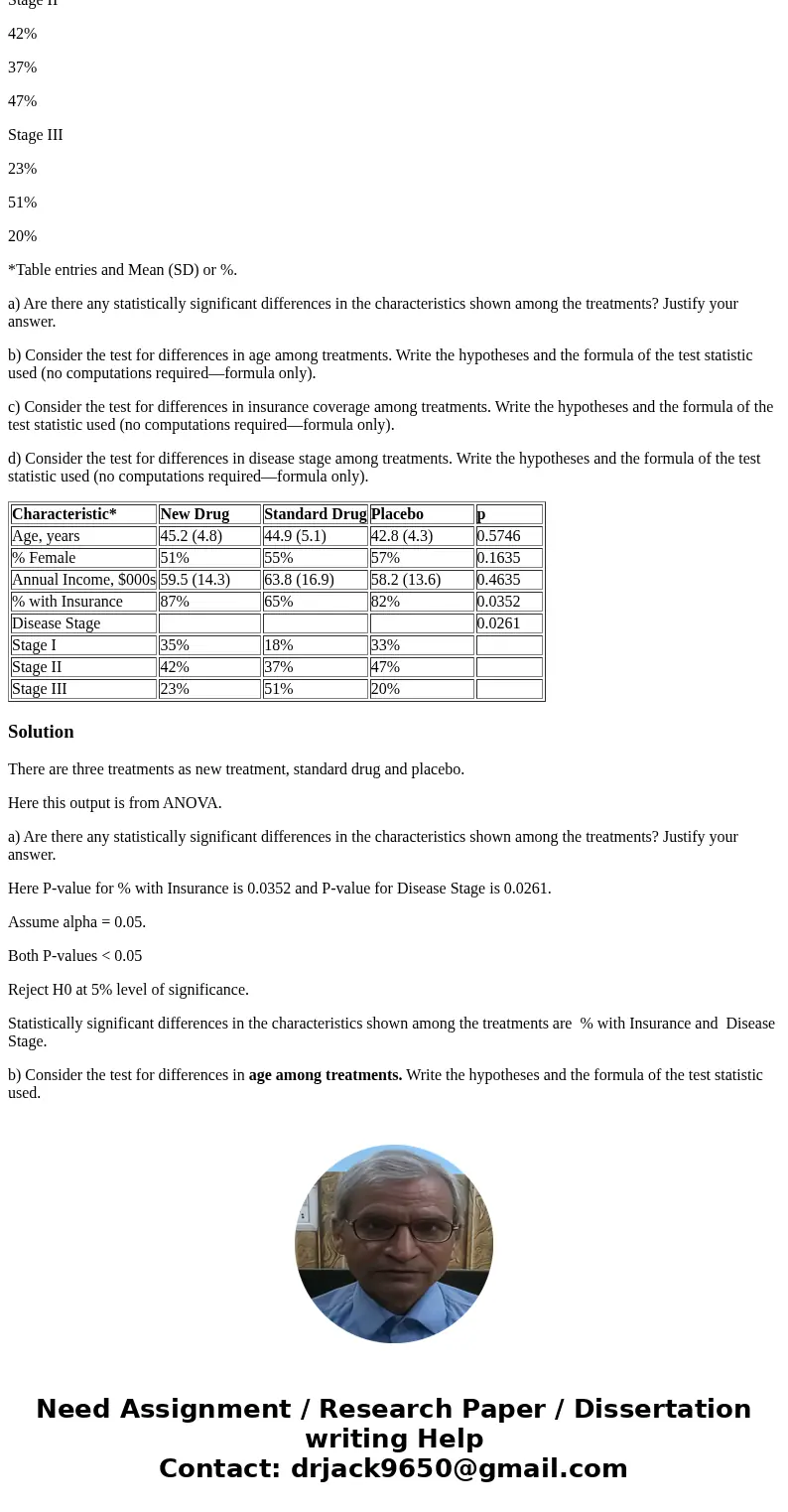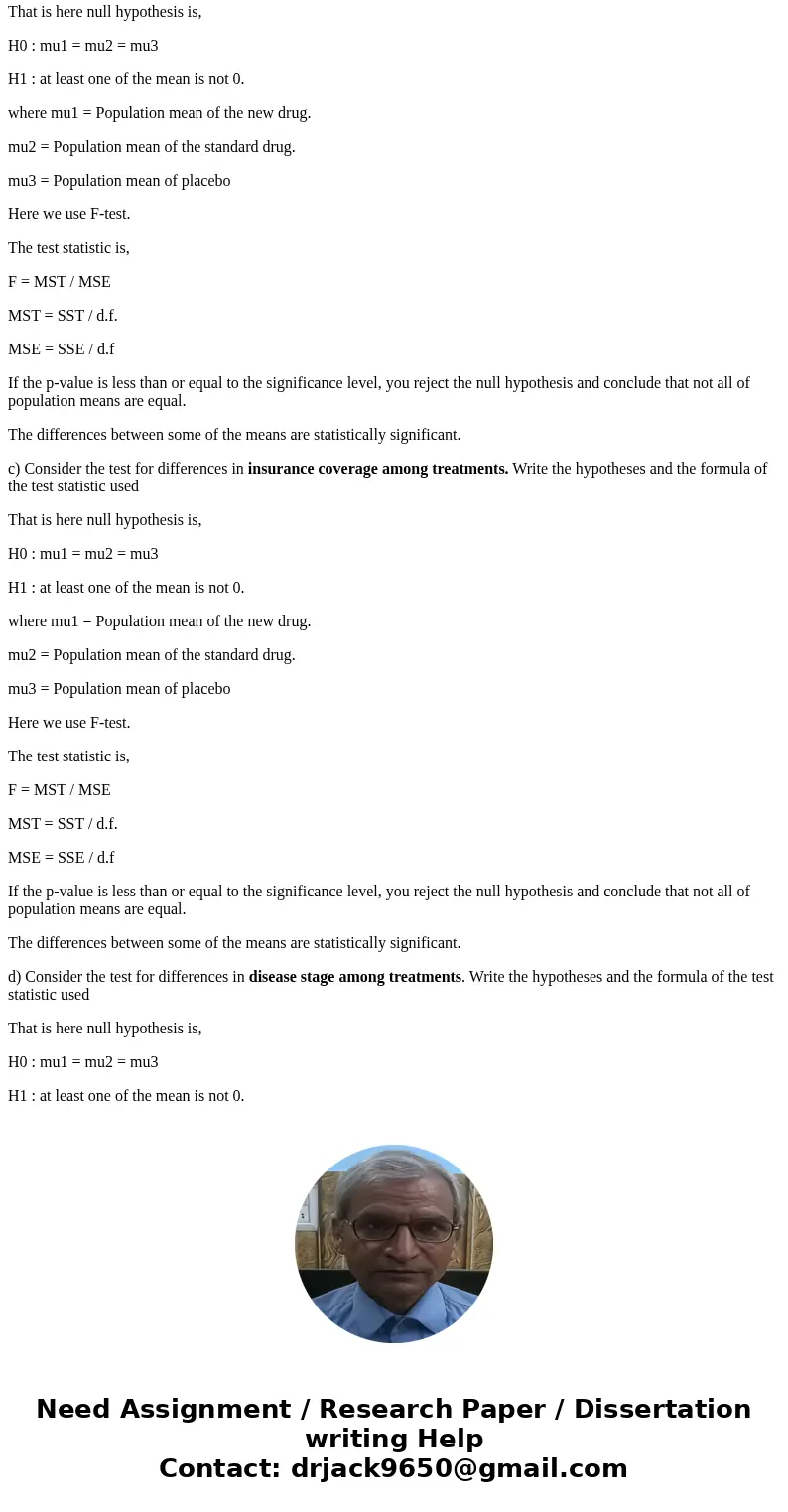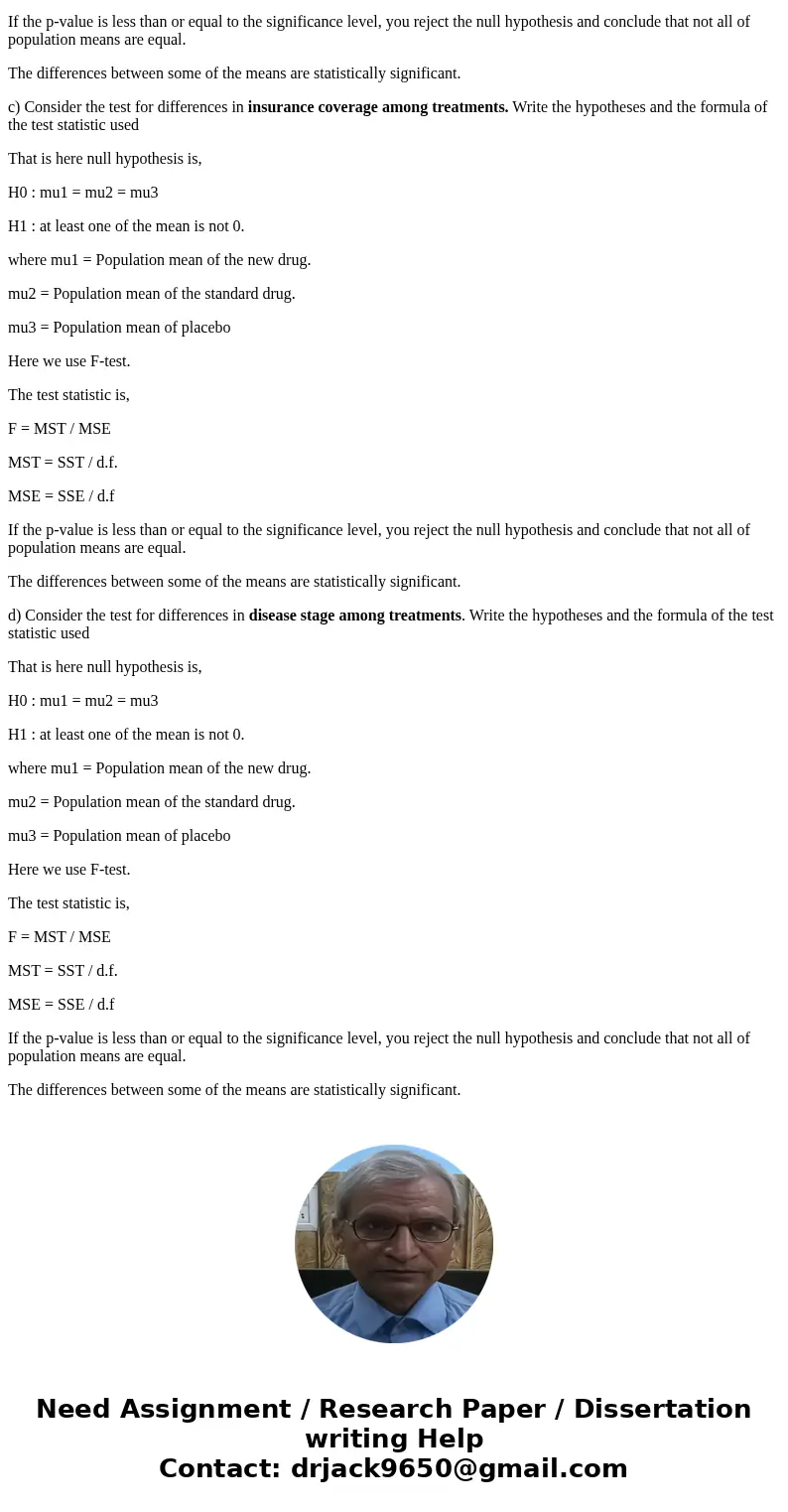1 The following table was presented in an article summarizin
1. The following table was presented in an article summarizing a study to compare a new drug to a standard drug and to a placebo.
Characteristic*
New Drug
Standard Drug
Placebo
p
Age, years
45.2 (4.8)
44.9 (5.1)
42.8 (4.3)
0.5746
% Female
51%
55%
57%
0.1635
Annual Income, $000s
59.5 (14.3)
63.8 (16.9)
58.2 (13.6)
0.4635
% with Insurance
87%
65%
82%
0.0352
Disease Stage
0.0261
Stage I
35%
18%
33%
Stage II
42%
37%
47%
Stage III
23%
51%
20%
*Table entries and Mean (SD) or %.
a) Are there any statistically significant differences in the characteristics shown among the treatments? Justify your answer.
b) Consider the test for differences in age among treatments. Write the hypotheses and the formula of the test statistic used (no computations required—formula only).
c) Consider the test for differences in insurance coverage among treatments. Write the hypotheses and the formula of the test statistic used (no computations required—formula only).
d) Consider the test for differences in disease stage among treatments. Write the hypotheses and the formula of the test statistic used (no computations required—formula only).
| Characteristic* | New Drug | Standard Drug | Placebo | p |
| Age, years | 45.2 (4.8) | 44.9 (5.1) | 42.8 (4.3) | 0.5746 |
| % Female | 51% | 55% | 57% | 0.1635 |
| Annual Income, $000s | 59.5 (14.3) | 63.8 (16.9) | 58.2 (13.6) | 0.4635 |
| % with Insurance | 87% | 65% | 82% | 0.0352 |
| Disease Stage | 0.0261 | |||
| Stage I | 35% | 18% | 33% | |
| Stage II | 42% | 37% | 47% | |
| Stage III | 23% | 51% | 20% |
Solution
There are three treatments as new treatment, standard drug and placebo.
Here this output is from ANOVA.
a) Are there any statistically significant differences in the characteristics shown among the treatments? Justify your answer.
Here P-value for % with Insurance is 0.0352 and P-value for Disease Stage is 0.0261.
Assume alpha = 0.05.
Both P-values < 0.05
Reject H0 at 5% level of significance.
Statistically significant differences in the characteristics shown among the treatments are % with Insurance and Disease Stage.
b) Consider the test for differences in age among treatments. Write the hypotheses and the formula of the test statistic used.
That is here null hypothesis is,
H0 : mu1 = mu2 = mu3
H1 : at least one of the mean is not 0.
where mu1 = Population mean of the new drug.
mu2 = Population mean of the standard drug.
mu3 = Population mean of placebo
Here we use F-test.
The test statistic is,
F = MST / MSE
MST = SST / d.f.
MSE = SSE / d.f
If the p-value is less than or equal to the significance level, you reject the null hypothesis and conclude that not all of population means are equal.
The differences between some of the means are statistically significant.
c) Consider the test for differences in insurance coverage among treatments. Write the hypotheses and the formula of the test statistic used
That is here null hypothesis is,
H0 : mu1 = mu2 = mu3
H1 : at least one of the mean is not 0.
where mu1 = Population mean of the new drug.
mu2 = Population mean of the standard drug.
mu3 = Population mean of placebo
Here we use F-test.
The test statistic is,
F = MST / MSE
MST = SST / d.f.
MSE = SSE / d.f
If the p-value is less than or equal to the significance level, you reject the null hypothesis and conclude that not all of population means are equal.
The differences between some of the means are statistically significant.
d) Consider the test for differences in disease stage among treatments. Write the hypotheses and the formula of the test statistic used
That is here null hypothesis is,
H0 : mu1 = mu2 = mu3
H1 : at least one of the mean is not 0.
where mu1 = Population mean of the new drug.
mu2 = Population mean of the standard drug.
mu3 = Population mean of placebo
Here we use F-test.
The test statistic is,
F = MST / MSE
MST = SST / d.f.
MSE = SSE / d.f
If the p-value is less than or equal to the significance level, you reject the null hypothesis and conclude that not all of population means are equal.
The differences between some of the means are statistically significant.




 Homework Sourse
Homework Sourse